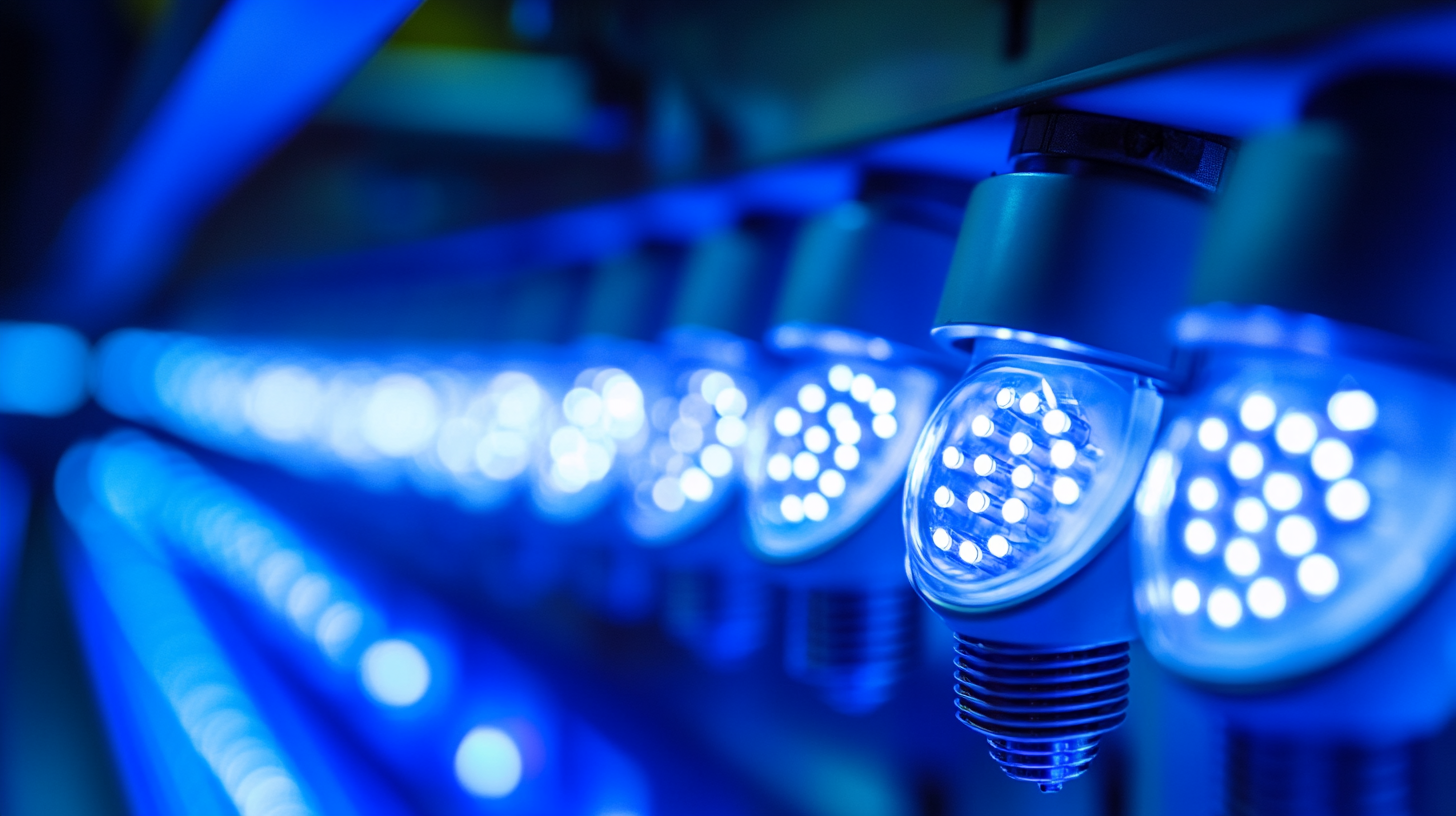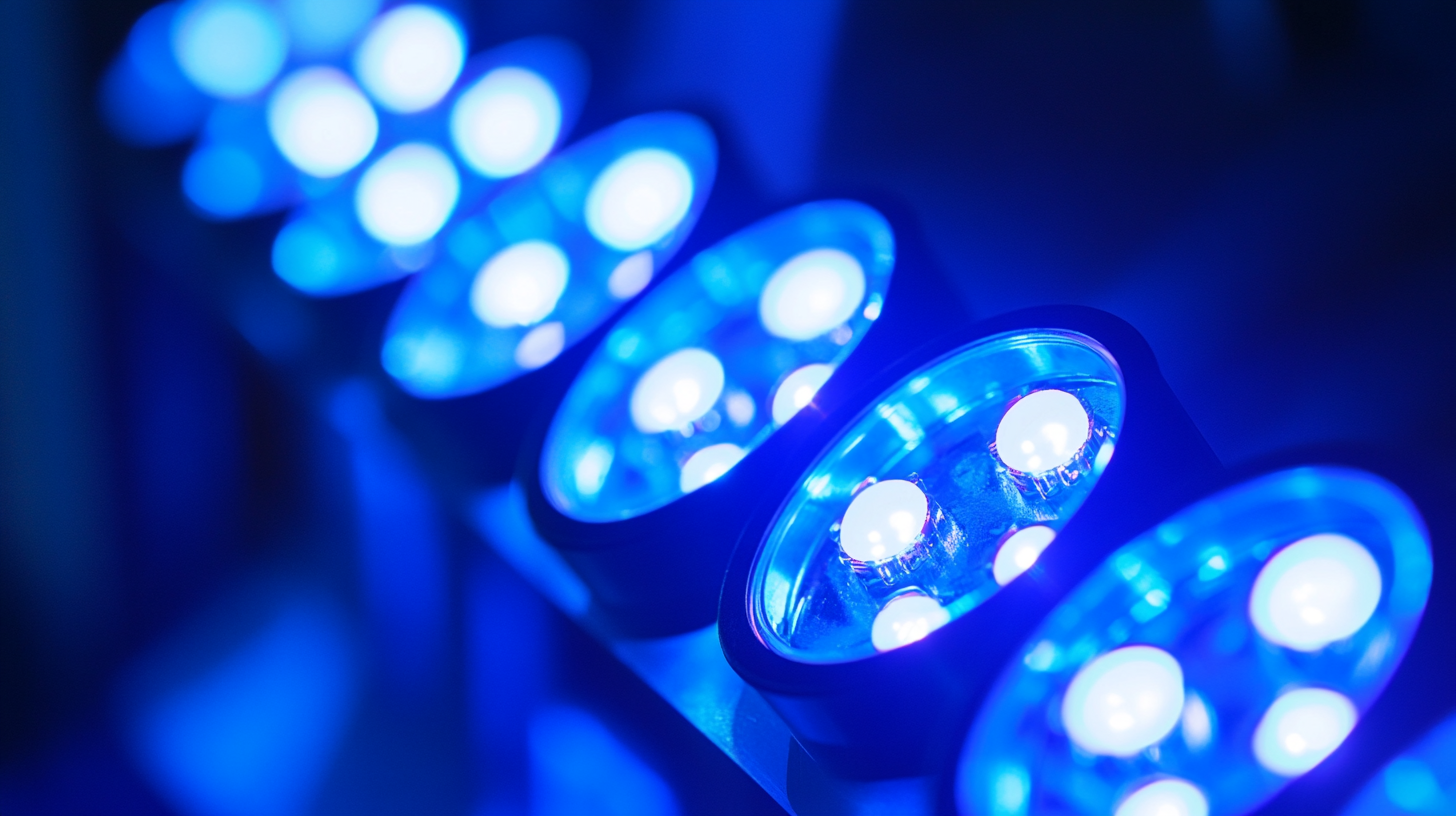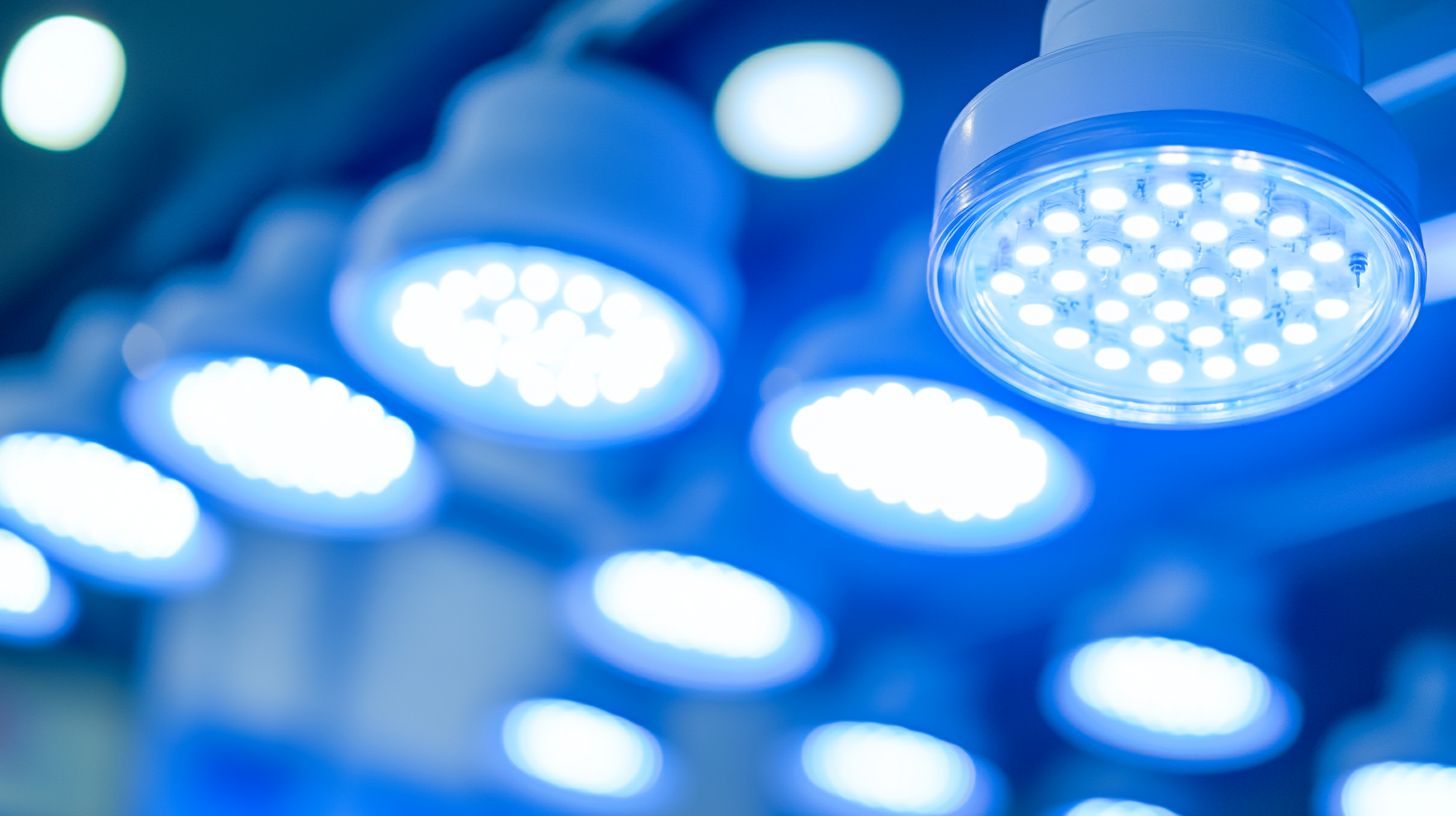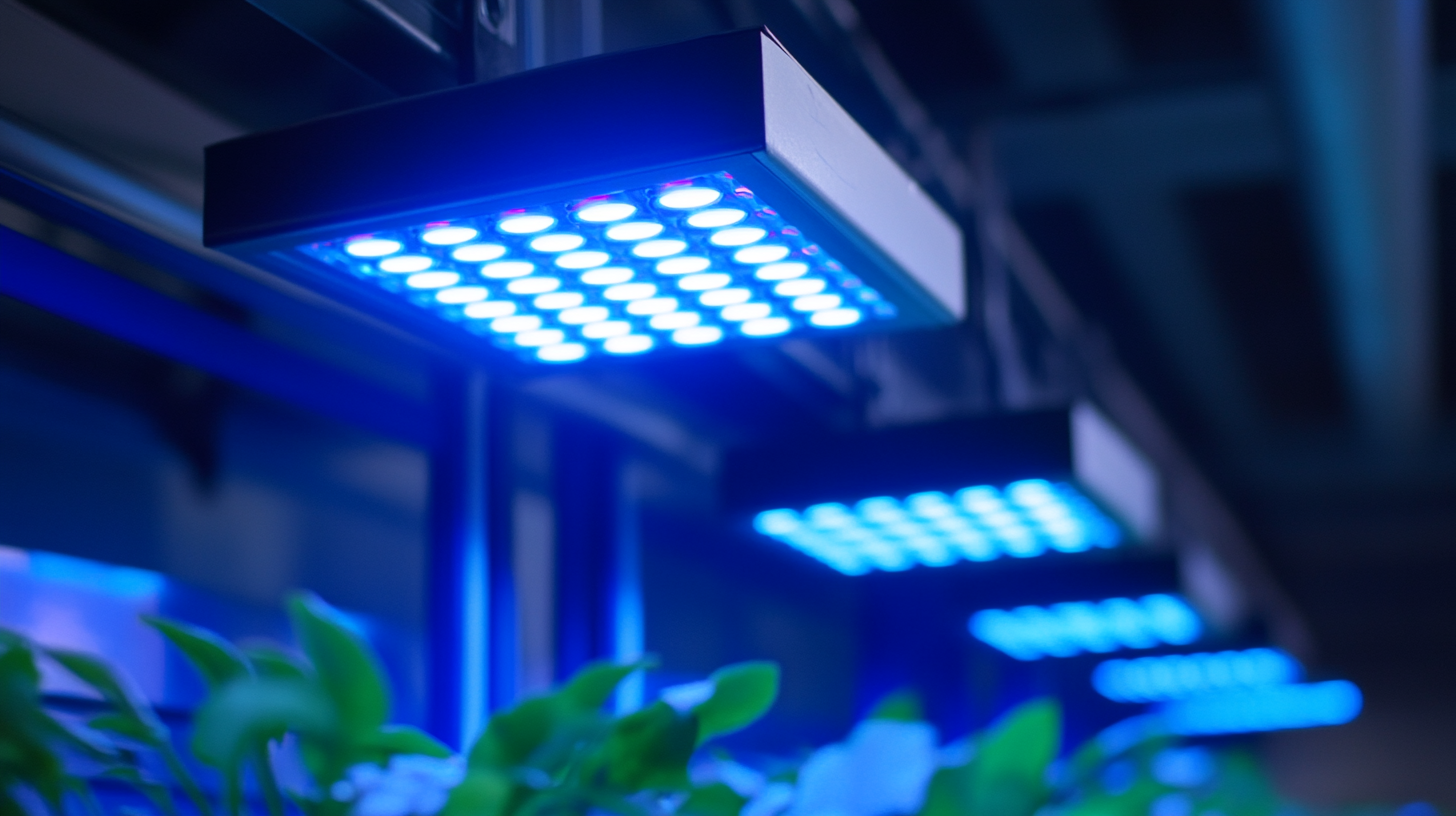Evaluating LED Lights: A Data-Driven Analysis of Efficiency, Costs, and Longevity for Global Buyers
In recent years, the global lighting industry has experienced a significant shift towards LED lights, driven by their superior efficiency and cost-effectiveness. According to a report by the U.S. Department of Energy, LED lighting can use up to 75% less energy than traditional incandescent bulbs, while lasting 25 times longer. This transformation is not merely an environmental necessity but also an economic opportunity for businesses and consumers alike. As the demand for energy-efficient solutions grows, buyers are increasingly evaluating the performance of LED lights to not only reduce operational costs but also minimize their carbon footprint.
Furthermore, a comprehensive analysis of the LED market reveals that the adoption of these innovative lighting solutions can lead to substantial long-term savings. A study by the Global Lighting Association estimates that if all global lighting were to transition to LEDs, the world could save approximately 1,800 terawatt-hours of electricity by 2030. This equates to a reduction of over 1.5 billion metric tons of CO2 emissions, highlighting the critical role LED lights play in sustainable development. As we delve deeper into this analysis of efficiency, costs, and longevity, it becomes essential for global buyers to navigate the intricate landscape of LED lighting that promises both financial and environmental benefits.

Understanding LED Technology: How It Works and Its Benefits
LED technology has revolutionized the lighting industry due to its remarkable efficiency and longevity. Unlike traditional incandescent bulbs that convert only about 10% of energy into light, LED lights emit up to 80% of their energy as illumination. A report by the U.S. Department of Energy highlights that widespread adoption of LED lighting could save approximately 348 terawatt-hours (TWh) of electricity by 2027, demonstrating significant energy conservation potential for consumers and businesses alike. The benefits of LED technology extend beyond energy efficiency. LED lights have a lifespan of up to 25,000 to 50,000 hours, considerably outpacing the longevity of conventional lighting options such as incandescent and fluorescent bulbs, which last for about 1,000 and 7,000 hours respectively. According to a study by the Lighting Global program, longer-lasting LEDs not only reduce the frequency of replacement but also result in lower overall costs for consumers over time when accounting for maintenance and disposal. In addition to energy savings and longer life, LED technology is also more environmentally friendly. Research indicates that by reducing energy consumption, LEDs contribute to lower greenhouse gas emissions. A transition to LED lighting across the globe is projected to prevent the emission of over 500 million metric tons of carbon dioxide annually by 2030. Therefore, understanding the fundamentals of LED technology and its myriad benefits positions global buyers to make informed decisions that align with both economic and environmental sustainability goals.

Assessing Energy Efficiency: Comparing LED Lights with Traditional Lighting Options
In the modern era of lighting solutions, energy efficiency has become a pivotal factor for consumers and businesses alike. When comparing LED lights to traditional lighting options such as incandescent and fluorescent bulbs, the advantages of LEDs become overwhelmingly clear. LED lights consume significantly less energy, converting a larger percentage of electrical input into usable light, which not only reduces electricity bills but also minimizes the environmental impact associated with energy production.
One of the striking features of LEDs is their longevity. Traditional bulbs often require frequent replacements, leading to higher long-term costs and waste. In contrast, LED lights can last up to 25,000 hours or more, making them a more sustainable choice. This durability means fewer resources are consumed in manufacturing and distribution, ultimately contributing to environmental conservation efforts.
Additionally, the energy efficiency of LEDs translates into reduced carbon footprints. By utilizing energy-efficient LEDs, households and businesses can play a critical role in combating climate change while enjoying the benefits of brighter, more effective lighting. The initial investment in LED technology may be higher, but the savings accumulated over time, paired with the reduced environmental impact, create a compelling case for choosing LEDs over traditional lighting options.

Cost Analysis: Initial Investment vs. Long-Term Savings with LED Lights
When considering the transition to LED lights, one of the most critical factors for global buyers is the cost analysis that juxtaposes initial investment against long-term savings. While the upfront cost of LED lighting solutions is typically higher than traditional incandescent or fluorescent bulbs, the long-term financial benefits can significantly outweigh these initial expenditures. LEDs are designed to have a longer lifespan, often lasting up to 25,000 hours or more, compared to just 1,000 hours for incandescent bulbs, which means fewer replacements and reduced labor costs over time.
Moreover, LED lights are known for their energy efficiency, consuming up to 80% less electricity than traditional lighting options. This efficiency translates directly into lower energy bills, making up for the higher initial price. When analyzing total costs, it becomes apparent that the savings in energy expenses accumulate rapidly, offering an attractive return on investment. For instance, businesses and homeowners who switch to LEDs may find that their lighting costs decrease significantly within just a few years, making it a financially sound decision in the long run.
Additionally, the environmental impact of switching to LED lights adds another layer of value to this cost analysis. By using less energy and producing less waste, purchasing LED lights contributes to sustainability goals, appealing to eco-conscious consumers and organizations alike. As buyers evaluate their options, understanding the balance between initial outlay and long-term benefits is essential in making an informed decision that aligns with both financial and environmental priorities.

Longevity Factors: How Lifespan Influences Overall Value in LED Lighting
When evaluating LED lighting, one of the most crucial aspects to consider is longevity, which significantly impacts the overall value of these products. According to a report by the U.S. Department of Energy, the average lifespan of an LED bulb can reach up to 25,000 hours or more, substantially outpacing traditional incandescent bulbs, which typically last around 1,000 hours. This extended lifespan not only reduces the frequency of replacements but also minimizes the labor and disposal costs associated with replacing less durable options.
Furthermore, the longevity of LED lights enhances their energy efficiency. The Energy Information Administration (EIA) states that switching to LED lighting can lead to energy savings of up to 80% compared to incandescent lights and around 50% compared to compact fluorescent lights (CFLs). The longer use of LED bulbs means that not only are fewer replacements needed, but the energy savings accumulate over a more extended period, resulting in significant cost reductions for consumers and businesses alike.
In addition to cost savings, longevity also plays a pivotal role in the environmental impact of lighting choices. A report from the International Energy Agency (IEA) emphasizes that the transition to LED technology could lead to a reduction of over 1,400 terawatt-hours of electricity consumption globally by 2030 if LEDs replace traditional lighting solutions. This environmentally friendly aspect, coupled with long-lasting performance, positions LEDs as a valuable investment for eco-conscious buyers looking to balance efficiency with sustainability.
Global Market Trends: What Buyers Need to Know About LED Adoption Worldwide
The global market for LED lighting continues to expand at a remarkable pace, driven by increasing energy efficiency demands and sustainability initiatives. According to a report by Allied Market Research, the global LED market was valued at $54.5 billion in 2020 and is projected to reach $151.4 billion by 2028, growing at a CAGR of 14.2%. This growth reflects a significant shift in consumer preferences as more buyers seek environmentally friendly and cost-effective lighting solutions.
One of the key factors driving LED adoption is their energy efficiency. A study conducted by the U.S. Department of Energy revealed that widespread use of LED lighting could save about 348 terawatt-hours (TWh) of electricity between now and 2030, which translates into a staggering $30 billion in utility bill savings annually. For buyers, this means not only lower energy costs but also a reduced carbon footprint, making LEDs an increasingly attractive option in both residential and commercial markets globally.
Additionally, the longevity of LED products adds to their appeal. According to the LED Lighting Facts program, the average lifespan of an LED bulb can range from 15,000 to 50,000 hours, significantly outpacing traditional incandescent lights and compact fluorescents, which typically last around 1,000 to 10,000 hours. This extended lifespan contributes to lower replacement and maintenance costs, offering buyers more value over time. As countries worldwide implement stricter energy regulations and promote green technologies, understanding these trends is crucial for buyers looking to invest wisely in lighting solutions.

